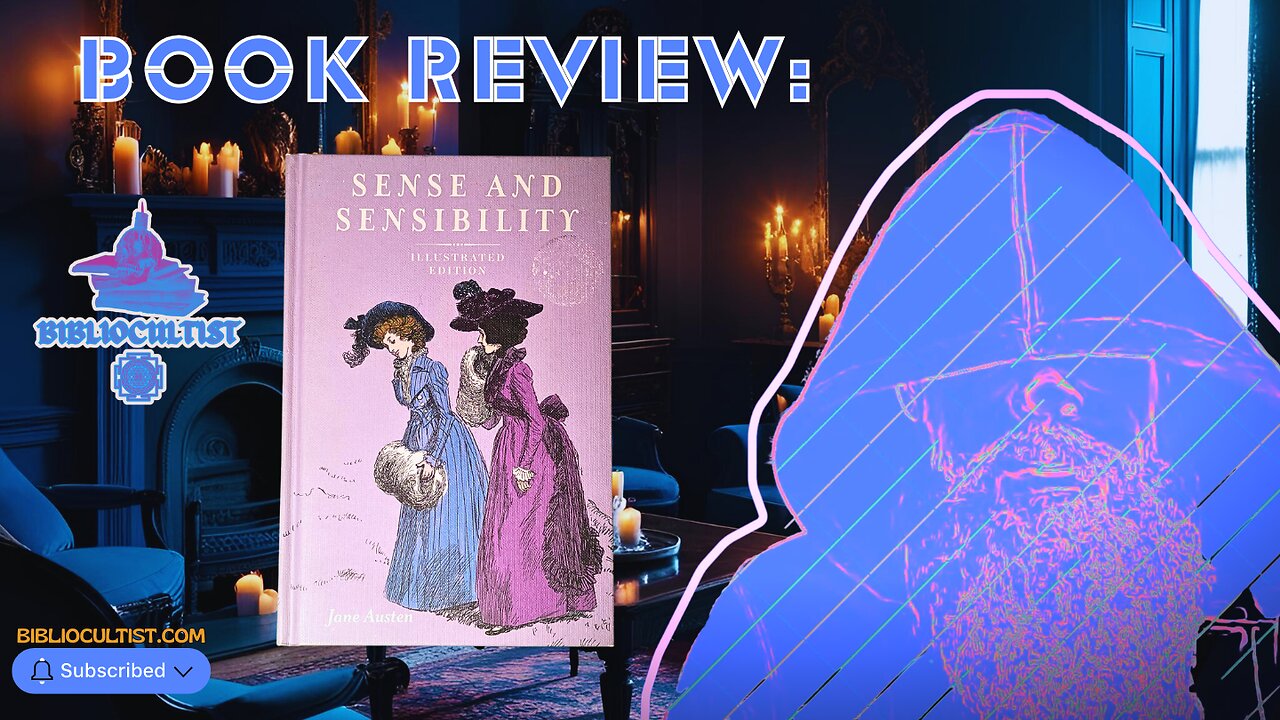Premium Only Content

Beyond Romance: The Hidden Depths of Sense and Sensibility
*CHECK OUT MY MERCH: https://bibliocultist.printful.me/*
In this #bookreview #bookrecommendation , I delve into Jane Austen's beloved novel 'Sense and Sensibility', exploring its nuanced portrayal of female psychology and the intricate social dynamics of the Victorian era. Austen's masterful writing style draws readers into the seemingly mundane yet intricate world of societal expectations and interpersonal relationships. The video highlights the novel's focus on the concerns of the lower nobility, a class bound by rigid structures governing every interaction.
Notably, I examine Austen's characterization of men as petty and feminine, suggesting her attempt to understand male psychology from a uniquely female perspective. Throughout, I praise 'Sense and Sensibility' as a captivating window into the historical context of women's lives and societal norms, while also appreciating its timeless themes of human relationships and social dynamics. Whether you're a longtime Austen admirer or a newcomer to her works, this analysis offers a fresh and insightful look at one of literature's most celebrated novels.
*all music and content copyright BiblioCultist.com*
#booktube #books #JaneAusten #SenseandSensibility #literature #Victorianera #femininepsychology #socialclass #genderroles #relationships #biblio #cultist
**SHOW NOTES**
1. Jane Austen (1775–1817) was an English novelist celebrated for her sharp social commentary and timeless depictions of love, class, and manners in Georgian England. She wrote six major novels, including *Pride and Prejudice*, *Sense and Sensibility*, and *Emma*, which remain literary classics. Due to societal norms and gender biases of her time, Austen published her works anonymously, often attributing them to "A Lady." Her anonymity allowed her to critique the rigid social structures of her era while maintaining a degree of privacy. It was only after her death that her identity as the author became widely known, cementing her legacy as one of literature's greatest voices.
2. During the Victorian era, female dynamics shifted as industrialization and urbanization altered traditional roles, leading to a gradual erosion of the organic social order. This marked a decline in the sacralized feminine principle, where women were increasingly drawn away from their natural domains of family and hearth toward external pursuits driven by emerging societal pressures. The rise of sentimentalism and moral reform movements further diluted the transcendent aspects of femininity, replacing them with utilitarian ideals that undermined the hierarchical balance between the sexes. This transformation reflected a broader loss of spiritual rootedness in Western society.
3. The collapse of mating innocence and decency in the West can be traced to the erosion of traditional social structures and moral frameworks that once governed courtship and relationships. The sexual revolution of the 20th century, fueled by cultural liberalism, contraception, and shifting gender roles, dismantled long-standing norms around modesty, commitment, and respect in romantic interactions. Additionally, the rise of individualism and consumerist attitudes reduced relationships to transactional or self-gratifying exchanges, while mass media and technology normalized hyper-sexualization and instant gratification. This breakdown reflects a broader decline in shared values, where the sacredness of human connection has been replaced by fleeting, impersonal encounters.
-
 3:47:18
3:47:18
Right Side Broadcasting Network
7 hours agoLIVE REPLAY: President Trump Makes an Announcement - 9/2/25
159K55 -

The Quartering
2 hours agoAlex Jones Goes To WAR With Owen Shroyer, Are All Women Terrible?, Woke Backfire Of The Year!
70.3K16 -

The White House
6 hours agoPresident Trump Makes an Announcement, Sep. 2, 2025
8.86K10 -
 2:15:05
2:15:05
MattMorseTV
2 hours ago $9.90 earned🔴Trump's Oval Office BOMBSHELL.🔴
15.3K10 -
 18:14
18:14
Real Estate
14 hours ago $0.38 earnedRising Prices PUSHING AMERICANS OVER THE EDGE
6.39K1 -
 1:43:35
1:43:35
Russell Brand
3 hours agoTrump Demands Big Pharma PROVE Covid Vaccine Is Safe – Did Pfizer LIE?! - SF626
131K25 -
 LIVE
LIVE
Due Dissidence
4 hours agoIsrael THREATENS Greta, InfoWars Host QUITS, FL Losing $200M on EMPTYING Alligator Alcatraz
960 watching -
 6:09:56
6:09:56
Law&Crime
7 hours ago $0.84 earnedLIVE: Adelson Matriarch Murder Trial — FL v. Donna Adelson — Day 6
12.8K -
 1:08:04
1:08:04
Sean Unpaved
3 hours agoGridiron Shocks: Arch's Rough Start, Belichick's Tar Heel Tumble, & NFL Week 1 Buzz
29.5K -
 1:47:00
1:47:00
Professor Nez
2 hours ago🚨🇺🇸President Trump makes MAJOR Announcement from Oval Office TODAY!
9.2K5